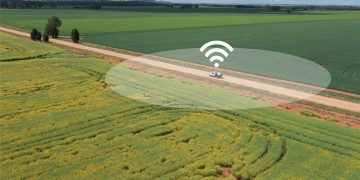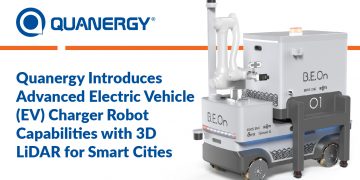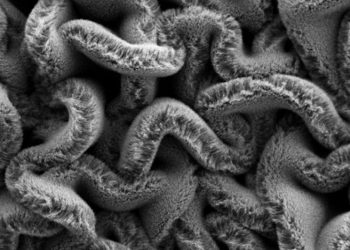Kennedy Space Center: Augmented reality, also known as AR, is a powerful tool that engineers are using to enable NASA to send humans to the Moon under the agency’s Artemis program. Lockheed Martin, lead contractor for NASA’s Orion spacecraft, is currently using AR to increase efficiency in building the spacecraft for Artemis II, the first crewed mission aboard Orion.
Mary Lakaszcyck, a technician with ASRC Federal Data Solutions, a subcontractor to Lockheed Martin, wears a pair of AR goggles as she places tape in locations where technicians will install parts on Orion’s crew module adapter. The work is taking place in the high bay of the Neil Armstrong Operations and Checkout Building at NASA’s Kennedy Space Center in Florida.
The goggle technology provides a unique function for understanding the dynamic work environment of assembling complex hardware, such as a spacecraft that will fly humans to deep space. Instead of interpreting the work procedure from text or models on a 2-D screen, the instructions appear overlaid in 3-dimensional space onto the physical spacecraft while wearing the goggles.
“I honestly cannot express how helpful, time-saving, and fun, the AR goggles are to use,” Lakaszcyck said. “For something we are used to doing in at least a week’s time, or eight to 12 shifts, we were able to complete in one shift.”
Lakaszcyck said looking through the goggles and seeing exactly where to place items on the spacecraft, what orientation to place them, and the reference number that accompanies them, makes the process more efficient than ever.
The goggles are not a passing fad. They are one of the specialized tools in Lockheed Martin’s repertoire used by the processing team to prepare the Orion spacecraft for its flight. The company started using the technology in 2017.
“We used the goggles on manufacturing activities for the Orion that will fly on Artemis I,” said Shelley Peterson, who specializes in augmented and mixed reality with Lockheed Martin. “Augmented reality is helping us push the boundaries to perform activities much more rapidly than with traditional methods.”
Carlos Garcia, NASA crew module adapter assembly, integration and test lead for Orion production operations, is pleased with the time-saving results from using AR technology for click bonds. Click bonds are fasteners that secure the miles of wiring harnesses to the spacecraft structure.
“For the crew module adapter effort, using this technology for locating click bonds for securing harnesses equated to up to a three week savings,” said Garcia.
AR goggle-wearers will place several critical spaceflight components on the Orion hardware, including the crew module and heat shield for Artemis II. They also will use augmented reality work instructions to assemble the crew seats for the spacecraft.
“Across four sites, we use augmented reality to complete spacecraft manufacturing activities in 90% less time than with traditional methods. For example, an activity that normally takes 8 hours could be completed in 45 minutes,” Peterson said. “If we look just at fasteners, one Orion space vehicle has more than 57,000 cable harness fasteners. Saving time per fastener adds up quickly!”
Peterson says using augmented reality work instructions removes almost all of the interpretation, and workers understand the task at hand immediately.
Manufactured by Microsoft, the HoloLens 2 is the second iteration of the goggles used by Lockheed Martin. Lockheed builds the content for the goggles in-house using WorkLink, an augmented reality software platform developed by Scope AR.
“Looking back even four years ago, I never would have pictured myself working hands-on with a spacecraft going into deep space,” Lakaszcyck said. “I’ve worked on three different vehicles, including the current one for Artemis II that will take humans into space. Now that I am a part of the Artemis generation, it is an irreplaceable feeling of not just excitement, but responsibility.”
Under the Artemis program, NASA will land the first woman and the next man on the Moon. Orion will launch on the agency’s Space Launch System rocket to carry the crew to space, provide emergency abort capability, sustain the crew during space travel, and provide safe re-entry from deep space return velocities. NASA will develop a sustainable presence at the Moon and apply knowledge gained to send astronauts to Mars.

for developers and enthusiasts







